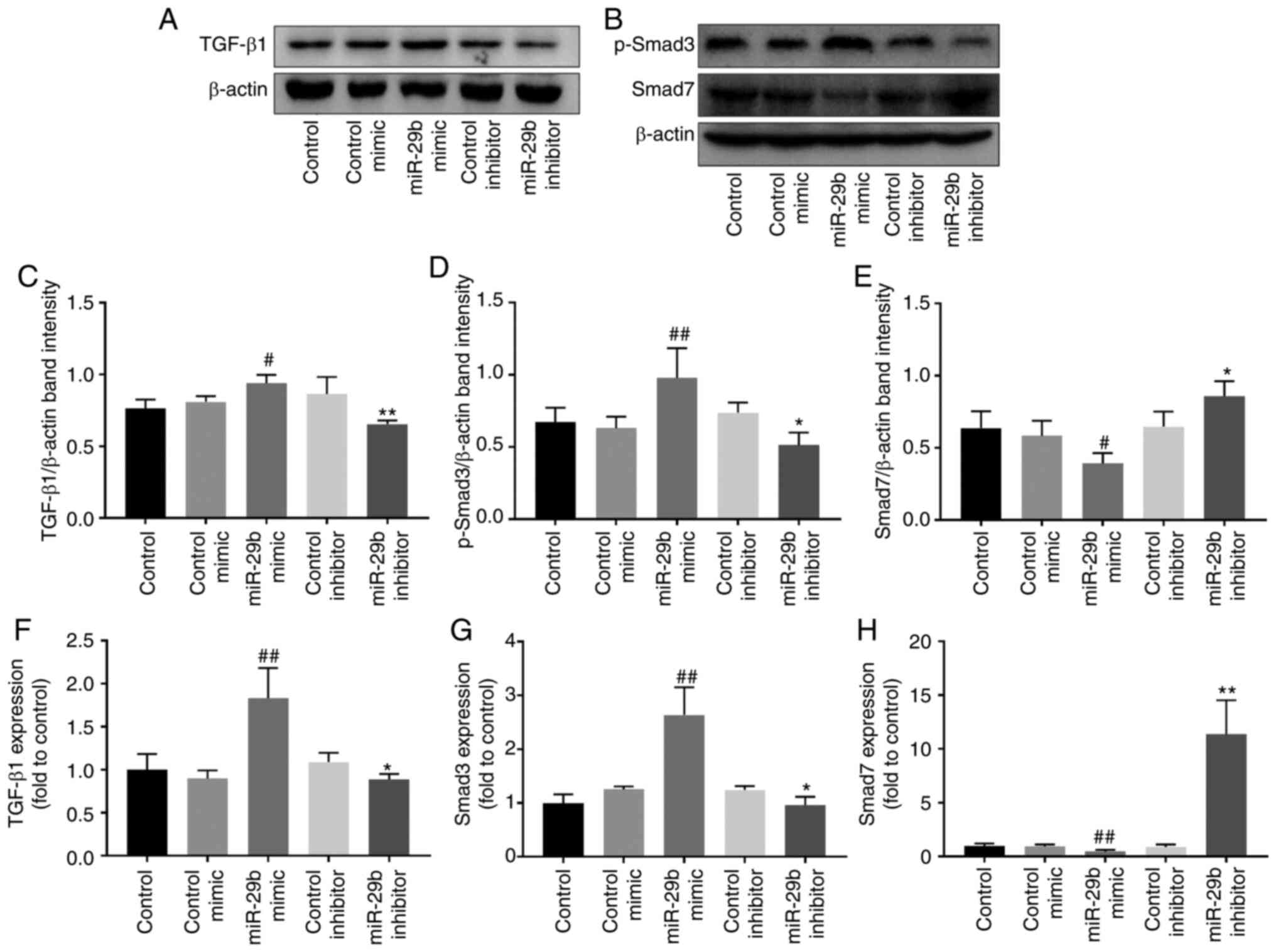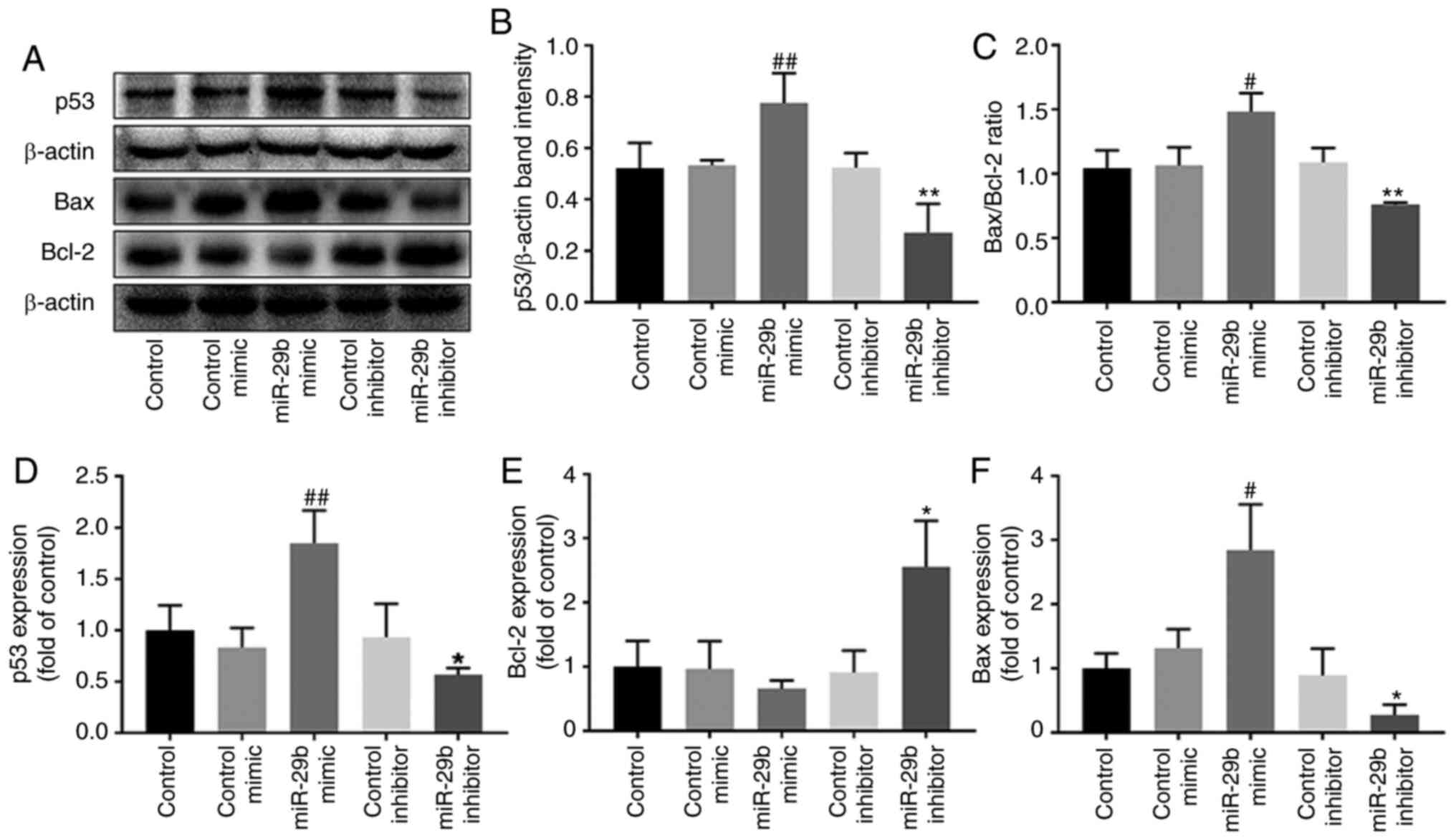|
1
|
Bray F, Ferlay J, Soerjomataram I, Siegel
RL, Torre LA and Jemal A: Global cancer statistics 2018: GLOBOCAN
estimates of incidence and mortality worldwide for 36 cancers in
185countries. CA Cancer J Clin. 68:394–424. 2018. View Article : Google Scholar : PubMed/NCBI
|
|
2
|
You LN, Tai QW, Xu L, Hao Y, Guo WJ, Zhang
Q, Tong Q, Zhang H and Huang WK: Exosomal LINC00161 promotes
angiogenesis and metastasis via regulating miR-590-3p/ROCK axis in
hepatocellular carcinoma. Cancer Gene Ther. 28:719–736. 2021.
View Article : Google Scholar : PubMed/NCBI
|
|
3
|
Smith EM and Jayson GC: The current and
future management of malignant ascites. Clin Oncol (R Coll Radiol).
15:59–72. 2003. View Article : Google Scholar
|
|
4
|
Mendell JT and Olson EN: MicroRNAs in
stress signaling and human disease. Cell. 148:1172–1187. 2012.
View Article : Google Scholar : PubMed/NCBI
|
|
5
|
Croce CM: 37 causes and consequences of
microRNA dysregulation in cancer. Eur J Cancer. 48(Suppl 5): S8–S9.
2012. View Article : Google Scholar
|
|
6
|
Yan B, Guo Q, Fu FJ, Wang Z, Yin Z, Wei YB
and Yang JR: The role of miR-29b in cancer: Regulation, function,
and signaling. Onco Targets Ther. 8:539–548. 2015.PubMed/NCBI
|
|
7
|
Wang LH, Huang J, Wu CR, Huang LY, Cui J,
Xing ZZ and Zhao CY: Downregulation of miR-29b targets DNMT3b to
suppress cellular apoptosis and enhance proliferation in pancreatic
cancer. Mol Med Rep. 17:2113–2120. 2018.
|
|
8
|
Cui H, Wang L, Gong P, Zhao C, Zhang S,
Zhang K, Zhou R, Zhao Z and Fan H: Deregulation between miR-29b/c
and DNMT3A is associated with epigenetic silencing of the CDH1
gene, affecting cell migration and invasion in gastric cancer. PLoS
One. 10:e01239262015. View Article : Google Scholar : PubMed/NCBI
|
|
9
|
Wang B, Li W, Liu H, Yang L, Liao Q, Cui
S, Wang H and Zhao L: miR-29b suppresses tumor growth and
metastasis in colorectal cancer via downregulating Tiam1 expression
and inhibiting epithelial-mesenchymal transition. Cell Death Dis.
5:e13352014. View Article : Google Scholar : PubMed/NCBI
|
|
10
|
Chen B, Wang J, Wang J, Wang H, Gu X, Tang
L and Feng X: A regulatory circuitry comprising TP53, miR-29
family, and SETDB1 in non-small cell lung cancer. Biosci Rep.
38:BSR201806782018. View Article : Google Scholar :
|
|
11
|
Xiong Y, Fang JH, Yun JP, Yang J, Zhang Y,
Jia WH and Zhuang SM: Effects of microRNA-29 on apoptosis,
tumorigenicity, and prognosis of hepatocellular carcinoma.
Hepatology. 51:836–845. 2010.
|
|
12
|
Yang HM, Sun CY, Liang JL, Xu LQ, Zhang
ZB, Luo DD, Chen HB, Huang YZ, Wang Q, Lee DY, et al:
Supercritical-carbon dioxide fluid extract from chrysanthemum
indicum enhances anti-tumor effect and reduces toxicity of
bleomycin in tumor-bearing mice. Int J Mol Sci. 18:4652017.
View Article : Google Scholar :
|
|
13
|
Nie J, Yang HM, Sun CY, Liu YL, Zhuo JY,
Zhang ZB, Lai XP, Su ZR and Li YC: Scutellarin enhances antitumor
effects and attenuates the toxicity of bleomycin in H22 ascites
tumor-bearing mice. Front Pharmacol. 9:6152018. View Article : Google Scholar : PubMed/NCBI
|
|
14
|
He XX, Zhang YN, Yan JW, Yan JJ, Wu Q and
Song YH: CP-31398 inhibits the growth of p53-mutated liver cancer
cells in vitro and in vivo. Tumour Biol. 37:807–815. 2016.
View Article : Google Scholar
|
|
15
|
Liu L, Yu ZY, Yu TT, Cui SH, Yang L, Chang
H, Qu YH, Lv XF, Zhang XA and Ren CC: A Slug-dependent mechanism is
responsible for tumor suppression of p53-stabilizing compound
CP-31398 in p53-mutated endometrial carcinoma. J Cell Physiol.
235:8768–8778. 2020. View Article : Google Scholar : PubMed/NCBI
|
|
16
|
Guo H, Zhang Z, Su Z, Sun C, Zhang X, Zhao
X, Lai X, Su Z, Li Y and Zhan JY: Enhanced anti-tumor activity and
reduced toxicity by combination andrographolide and bleomycin in
ascitic tumor-bearing mice. Eur J Pharmacol. 776:52–63. 2016.
View Article : Google Scholar : PubMed/NCBI
|
|
17
|
Avasarala S, Van Scoyk M, Wang J, Sechler
M, Vandervest K, Brzezinski C, Weekes C, Edwards MG, Arcaroli J,
Davis RE, et al: Hsa-miR29b, a critical downstream target of
non-canonical Wnt signaling, plays an anti-proliferative role in
non-small cell lung cancer cells via targeting MDM2 expression.
Biol Open. 2:675–685. 2013. View Article : Google Scholar : PubMed/NCBI
|
|
18
|
Bierie B and Moses HL: Tumour
microenvironment: TGFbeta: The molecular Jekyll and Hyde of cancer.
Nat Rev Cancer. 6:506–520. 2006. View
Article : Google Scholar : PubMed/NCBI
|
|
19
|
Zhou H, Wang K, Hu Z and Wen J: TGF-β1
alters microRNA profile in human gastric cancer cells. Chin J
Cancer Res. 25:102–111. 2013.PubMed/NCBI
|
|
20
|
Zhenye L, Chuzhong L, Youtu W, Xiaolei L,
Lei C, Lichuan H, Hongyun W, Yonggang W, Fei W and Yazhuo Z: The
expression of TGF-β1, Smad3, phospho-Smad3 and Smad7 is correlated
with the development and invasion of nonfunctioning pituitary
adenomas. J Transl Med. 12:712014. View Article : Google Scholar
|
|
21
|
Buenemann CL, Willy C, Buchmann A,
Schmiechen A and Schwarz M: Transforming growth
factor-beta1-induced Smad signaling, cell-cycle arrest and
apoptosis in hepatoma cells. Carcinogenesis. 22:447–452. 2001.
View Article : Google Scholar : PubMed/NCBI
|
|
22
|
Johansson J, Tabor V, Wikell A, Jalkanen S
and Fuxe J: TGF-β1-induced epithelial-mesenchymal transition
promotes monocyte/macrophage properties in breast cancer cells.
Front Oncol. 5:32015. View Article : Google Scholar
|
|
23
|
Han G and Wang XJ: Roles of TGFβ signaling
Smads in squamous cell carcinoma. Cell Biosci. 1:412011. View Article : Google Scholar
|
|
24
|
Zhang G, Feng W and Wu J: Down-regulation
of SEPT9 inhibits glioma progression through suppressing
TGF-β-induced epithelial-mesenchymal transition (EMT). Biomed
Pharmacother. 125:1097682020. View Article : Google Scholar
|
|
25
|
Takahashi K, Menju T, Nishikawa S, Miyata
R, Tanaka S, Yutaka Y, Yamada Y, Nakajima D, Hamaji M, Ohsumi A, et
al: Tranilast inhibits TGF-β1-induced epithelial-mesenchymal
transition and invasion/metastasis via the suppression of Smad4 in
human lung cancer cell lines. Anticancer Res. 40:3287–3296. 2020.
View Article : Google Scholar : PubMed/NCBI
|
|
26
|
Samarakoon R, Higgins SP, Higgins CE and
Higgins PJ: The TGF-β1/p53/PAI-1 signaling axis in vascular
senescence: Role of caveolin-1. Biomolecules. 9:3412019. View Article : Google Scholar
|
|
27
|
Saile B, Matthes N, El Armouche H,
Neubauer K and Ramadori G: The bcl, NFkappaB and p53/p21WAF1
systems are involved in spontaneous apoptosis and in the
anti-apoptotic effect of TGF-beta or TNF-alpha on activated hepatic
stellate cells. Eur J Cell Biol. 80:554–561. 2001. View Article : Google Scholar : PubMed/NCBI
|
|
28
|
Sun Y, Xia P, Zhang H, Liu B and Shi Y:
P53 is required for Doxorubicin-induced apoptosis via the TGF-beta
signaling pathway in osteosarcoma-derived cells. Am J Cancer Res.
6:114–125. 2016.PubMed/NCBI
|
|
29
|
Livak KJ and Schmittgen TD: Analysis of
relative gene expression data using real-time quantitative PCR and
the 2(-Delta Delta C(T)) method. Methods. 25:402–408. 2001.
View Article : Google Scholar
|
|
30
|
Kim S, Lee JH, Kang I, Hyun S, Yu J and
Shin C: An amphiphilic peptide induces apoptosis through the
miR29b-p53 pathway in cancer cells. Mol Ther Nucleic Acids.
5:e3302016. View Article : Google Scholar : PubMed/NCBI
|
|
31
|
Rupaimoole R and Slack FJ: MicroRNA
therapeutics: Towards a new era for the management of cancer and
other diseases. Nat Rev Drug Discov. 16:203–222. 2017. View Article : Google Scholar : PubMed/NCBI
|
|
32
|
Tu HC, Jacobs SC, Borkowski A and
Kyprianou N: Incidence of apoptosis and cell proliferation in
prostate cancer: Relationship with TGF-beta1 and bcl-2 expression.
Int J Cancer. 69:357–363. 1996. View Article : Google Scholar : PubMed/NCBI
|
|
33
|
Oltvai ZN, Milliman CL and Korsmeyer SJ:
Bcl-2 heterodimerizes in vivo with a conserved homolog, bax, that
accelerates programmed cell death. Cell. 74:609–619. 1993.
View Article : Google Scholar : PubMed/NCBI
|
|
34
|
Fries KL, Miller WE and Raab-Traub N:
Epstein-Barr virus latent membrane protein 1 blocks p53-mediated
apoptosis through the induction of the A20 gene. J Virol.
70:8653–8659. 1996. View Article : Google Scholar : PubMed/NCBI
|
|
35
|
Miyashita T and Reed JC: Tumor suppressor
p53 is a direct transcriptional activator of the human bax gene.
Cell. 80:293–299. 1995. View Article : Google Scholar : PubMed/NCBI
|
|
36
|
Zhu S, Wang T, Luo F, Li H, Jia Q, He T,
Wu H and Zou T: Astaxanthin inhibits proliferation and induces
apoptosis of LX-2 cells by regulating the miR-29b/Bcl-2 pathway.
Mol Med Rep. 19:3537–3547. 2019.PubMed/NCBI
|
|
37
|
Liang H, Wang Q, Wang D, Zheng H,
Kalvakolanu DV, Lu H, Wen N, Chen X, Xu L, Ren J, et al: RGFP966, a
histone deacetylase 3 inhibitor, promotes glioma stem cell
differentiation by blocking TGF-β signaling via SMAD7. Biochem
Pharmacol. 180:1141182020. View Article : Google Scholar
|
|
38
|
Li B, Yin GF, Wang YL, Tan YM, Huang CL
and Fan XM: Impact of fecal microbiota transplantation on
TGF-β1/Smads/ERK signaling pathway of endotoxic acute lung injury
in rats. 3 Biotech. 10:522020. View Article : Google Scholar
|
|
39
|
Sivadas VP and Kannan S: The microRNA
networks of TGFβ signaling in cancer. Tumour Biol. 35:2857–2869.
2014. View Article : Google Scholar
|
|
40
|
Aure MR, Jernstrom S, Krohn M; Due Oslo
Breast Cancer Consortium E; Mills GB, Borresen-Dale AL, Sahlberg
KK, Lingjaerde OC and Kristensen VN: 331: Integrative analysis
reveals extensive association between microRNA expression and
mRNA-protein translation. Eur J Cancer. 50(Suppl 5): S792014.
View Article : Google Scholar
|



















